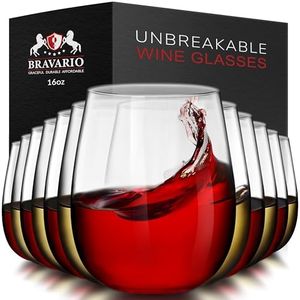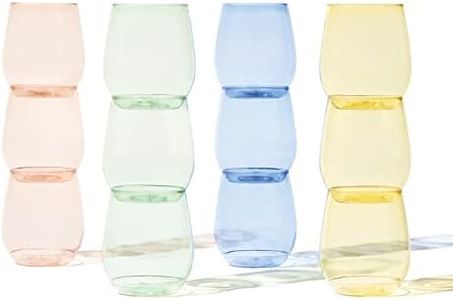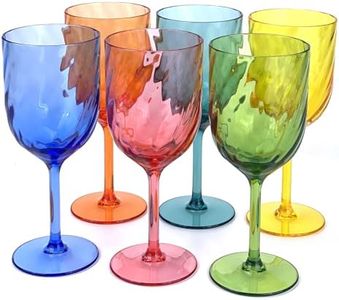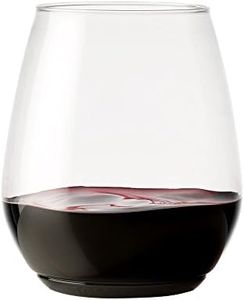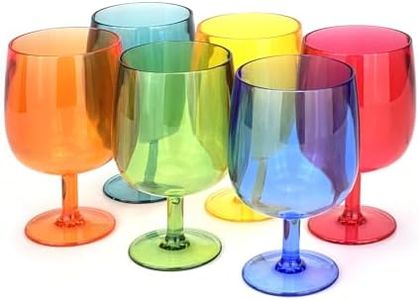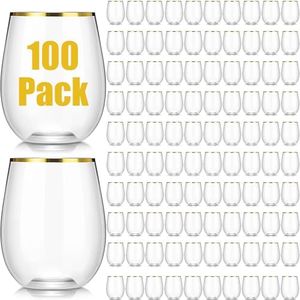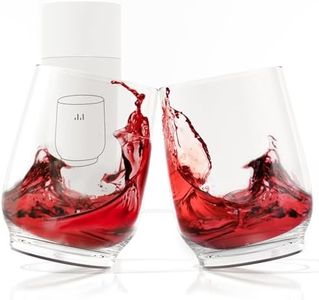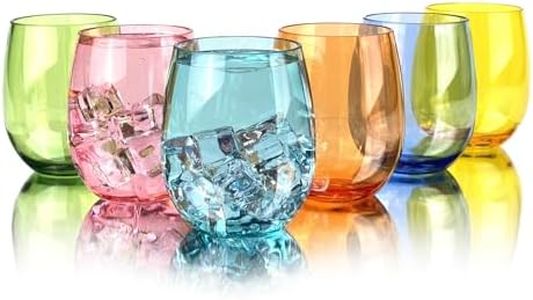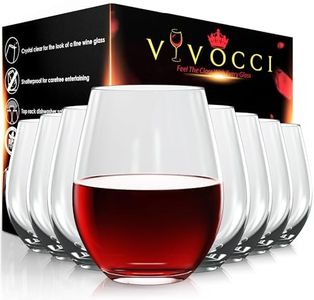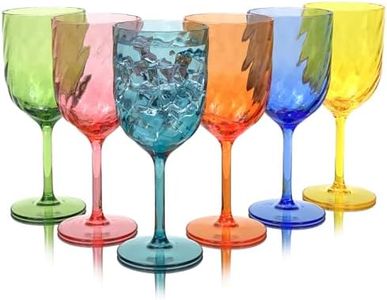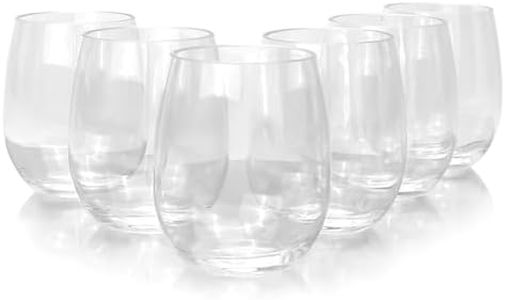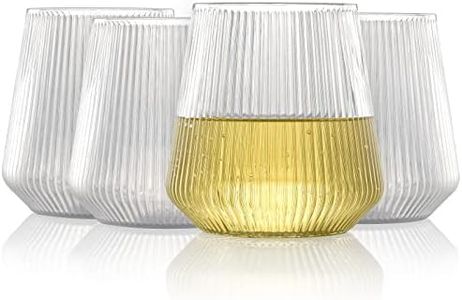We Use CookiesWe use cookies to enhance the security, performance,
functionality and for analytical and promotional activities. By continuing to browse this site you
are agreeing to our privacy policy
10 Best Plastic Wine Glasses
From leading brands and best sellers available on the web.Buying Guide for the Best Plastic Wine Glasses
When choosing plastic wine glasses, it's important to consider how and where you'll use them. These glasses are great for outdoor parties, picnics, or events where you want to avoid the risk of broken glass. The market offers a variety of styles, materials, and features suited to different needs and preferences. Focusing on specific attributes will help you find wine glasses that meet your requirements for style, durability, and usability.Material TypePlastic wine glasses can be made from a range of plastics, with the most common being acrylic, polycarbonate, and Tritan. This specification matters because different plastics offer varying levels of clarity, weight, resistance to shattering, and safety for food contact. Acrylic is lightweight and affordable, but can scratch and lose clarity over time. Polycarbonate is more durable and shatter-resistant, making it ideal for parties or outdoor use. Tritan is a newer material known for combining clarity and toughness, often being dishwasher safe and BPA-free. If you want the feel and look of real glass, prioritize clear, high-grade plastics like Tritan or polycarbonate, especially for frequent or formal use.
CapacityCapacity refers to how much liquid the glass holds, usually measured in ounces or milliliters. Smaller glasses (around 8-10 ounces) are common for white wines and casual sipping. Larger glasses (12-20 ounces) can accommodate reds, allowing more room for swirling, which helps aerate the wine and enhance aromas. To select the best capacity for your needs, think about the types of wine you enjoy and the setting—for outdoor events, a mid-sized glass may be most practical, while larger glasses can be a better fit for tastings or dinner parties.
Design (Stemmed vs. Stemless)Plastic wine glasses come in both stemmed and stemless designs. Stemmed glasses mimic traditional wine glasses and keep your hand from warming the wine, offering an elegant look that's great for sit-down meals or formal occasions. Stemless glasses are more stable and harder to tip over, making them convenient for casual settings, outdoor activities, or when children are present. Your choice should reflect how and where you'll most often use the glasses: pick stemmed for classic appeal and stemless for practicality and ease.
Reusable or DisposableSome plastic wine glasses are designed for single use, while others are made to be reused multiple times. Reusable options are often sturdier, thicker, and dishwasher safe, making them better for repeated entertaining or everyday use. Disposable glasses are lightweight and convenient for large gatherings, where cleanup needs to be minimal. You'll want to choose disposable only if convenience is your top priority, while reusable is better for reducing waste and having a more substantial feel.
Dishwasher SafeDishwasher safety indicates whether a plastic wine glass can be cleaned in a dishwasher without warping or losing clarity. This spec is important if you prefer fast and easy cleanup. Some plastics can become cloudy or weakened after repeated dishwasher cycles, so check this detail if you plan to use the glasses regularly. Handwashing is recommended for non-dishwasher safe glasses or when you want to maintain clarity and appearance for as long as possible.
BPA-FreeBPA is a chemical sometimes found in plastics, so 'BPA-free' means the plastic doesn’t contain this additive. This matters for health-conscious buyers who want to avoid any potential chemical leaching into their drinks. If health and safety are important to you or your guests, look for glasses labeled as BPA-free, which is common in higher-quality or newer plastic wine glasses.
